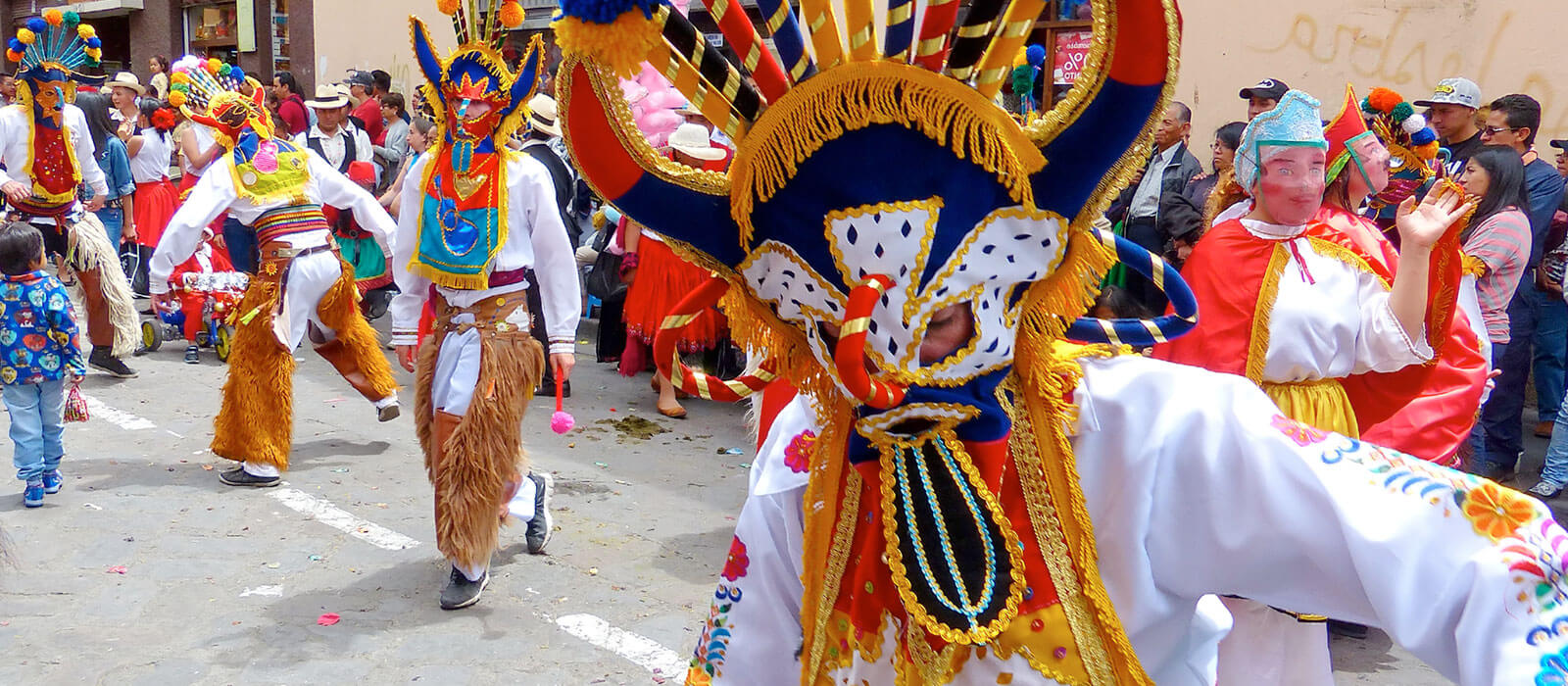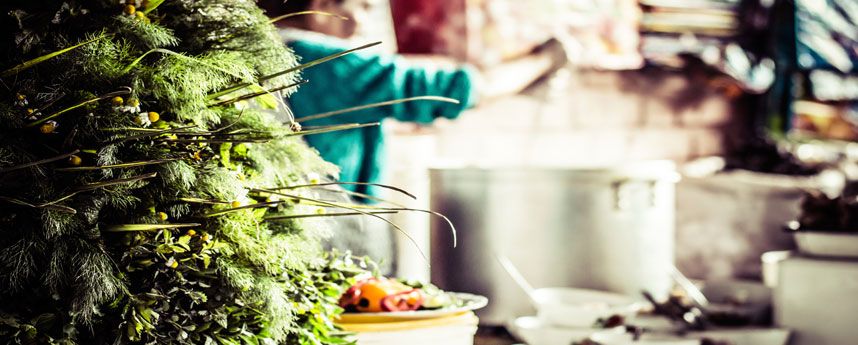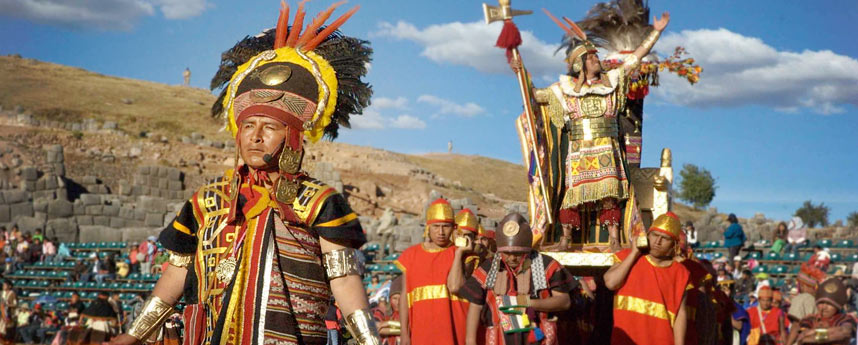Spanish Culture: Holidays in Peru | donQuijote





December is a period of the year full of celebrations and family events. In many countries around the world, festivities begin on the week around December 25th. However, Latinos start with some ceremonies way earlier than that.
Most holiday traditions in Latin America have to do with great food and the company of loved ones. Yet, some countries have special habits that make this time of the year a wonderful moment to pay a visit.
In this post, we show you some of their holiday customs. Click here if you want to read it in Spanish.

December 7th marks the beginning of the holiday season in Colombia. Families, friends, and neighbors light up many ornamental candles on the street.
They do it to honor the Virgin Mary and her Immaculate Conception, which is celebrated the day after.

Children in Mexico and Guatemala, among other countries, dress up as Mary and Joseph. They then participate in small parades that go door to door around the neighborhood to find shelter.
Inside, hosts offer them hot beverages, cookies, and some traditional foods such as steamed tamales. To close this ceremony, they hit a big star-shaped piñata.

In many countries around Latin America, people still preserve a very special tradition to bring the year to an end. On New Year’s Eve, they make life-size puppets with cardboard and fabric pieces.
At midnight on December 31st, they burn the puppets to get rid of all negative things and make a good start to the new year.
Frequently, these figures represent popular characters from the political arena. Every year, this tradition becomes a satirical showcase of today’s society.
Warini is the character who brings Christmas to Honduras. Covered with a mask, he dances at home on Christmas Eve accompanied by a band with drums.
These are just some of the most popular Latin American traditions for the holiday season. You may have spotted some differences with the Spanish holiday habits.
If you want to discover more about Latin customs, take advantage of your Winter Break and sign up to one of our Spanish programs. We are waiting for you!

Christmas is magical in every home, and in Latin America even more so. Here, old traditions are united with more brought from Spain, all often celebrated by the warming light of a summer’s sun. All of this makes for a fascinating, curious and very colorful celebration. Would you like to know more?
First, we’ll stop in Mexico where Christmas begins on the 16th of December and its posadas- popular festivities that remember Mary and Joseph’s pilgrimage from Nazareth to Bethlehem to await the birth of their son. And the Pastorelas, theatrical displays which celebrate the shepherds’ hardships on their journey to visit the Baby Jesus. But we’ll leave the hardships aside and move on to the joyful piñatas. Mexican piñatas are special: shaped like a seven-pointed star, one for each of the capital sins and, when they are finally broken, the shower of sweets that rains down represents the reward for having resisted those temptations.

And now to Ecuador. Here there are beautiful versions of the famous Nativity Scene, representations of the birth of Jesus, where it is tradition to cover the figure of the infant Jesus until the day of his birth, on Christmas Eve. By the way, in Ecuador the little ones write a letter to Christ, at least one month before Christmas, in which they ask for gifts for having behaved well. The most colorful celebration takes place during New Year's Eve: dolls are displayed on house doors, each one a testament to things left behind in the year. At midnight, these dolls are burned to ward off any harm that may come in the following year.
In Costa Rica an impressive celebration called Tope takes place. Riders and their horses from all over the valley of San Jose, bands, even clowns and dancers take part. Another typical Christmas celebration in Costa Rica also has a humanitarian element: it is the traditional illumination of the Hospital de los Niños, a beautiful, spectacular and very emotional act. The joy continues in the Festival de Luz, a nocturnal parade in which bands play and spangling floats fill the streets with wonderful images.

A festival of light is also a fundamental element in one of Colombia's most endearing celebrations. On December 7, the Catholic’s eve of the Immaculate Conception, thousands of Colombians offer lit candles on the streets; its purpose? To guide the Virgin in her path. Equally moving is the celebration of the Novena de Aguinaldos, in which, around a manger, children and adults sing Christmas carols during the 9 days, while exchanging typical sweets and desserts.
One of the most curious Christmas traditions of Peru takes place in the town of San Pablo, between Cuzco and Pruno: the Race of the Magi. In it the kings, who are not named "Melchor", "Gaspar" or "Baltasar" but Inkarri, Mistirri and Negrorri, compete for the town’s fortune the following year. If Inkarri wins, it will be a good harvest year in the valleys of Cuzco; if Mistirri wins, the lucky region will be the altiplano with its cattle; if it’s Negrorri, there will be shortages in all the regions, but fortune will come in the form of money.

In Chile, the most characteristic and fascinating part of Christmas also has its roots in nature. Being in the southern hemisphere, December is summertime, so you can celebrate the arrival of el Viejo Pascuero (that's how they call Santa) on the beach with a cold glass of cola de mono, a traditional Christmas cocktail, a warming mix of brandy, milk, coffee, sugar, cinnamon and vanilla.
Another country that celebrates Christmas in a summer atmosphere is Argentina. It is curious and delightful to see the streets, with the sun shining down, decorated in typical winter elements. And savoring the Argentinian grill a la canasta will make most anyone’s mouth water.
With this we conclude our stroll through Christmas in some of the places in Latin America. There are many more countries to visit, many more Christmas customs... and we invite you to discover them.
And of course… MERRY CHRISTMAS TO ALL!

A country on the west coast of Latin America, a rich culture and diverse gastronomy; Peru amazes everyone with its dishes. To let everyone enjoy these dishes, Peru has the world-famous and largest culinary festival in Latin America: the Mistura Festival! With the most traditional and all new Peruvian dishes prepared in all kinds of ways, Mistura is a festival that you really must have experienced once to understand its atmosphere. Besides the food, you can also enjoy traditional dance performances that will show you the real Peru.
On the west coast of cultural Latin America lies the Spanish-speaking country of Peru. Peru is the land of abandoned Inca cities and spectacular biodiversity, as well as unique and varied cuisine. Peruvian cuisine is a mix of Indian, Spanish and African cuisine, complemented by the best of Asian cuisine. The country is known for its varied cuisine as it consists of as many as 491 dishes. One of the most popular dishes of Peruvian cuisine is ceviche, a dish that consists of a raw fish dish where a variety of fish can be used. The fish is marinated with sour orange, lime or lemon and onions and peppers are added. The fish dish is often eaten with a rich salada, corn, avocado and potatoes. Another popular and traditional dish is ocopa, consisting of potatoes topped with a sauce of green peppers, herbs and cheese. Almost every dish is eaten with potatoes and a drink. The drink can range from the commonly consumed pilsner beer to a popular drink of Peru: Inca Kola. This yellow-colored soft drink with a little pungency is made from lemongrass and chamomile and tastes like bubble gum.
To celebrate the culinary tradition and allow everyone to enjoy what Peru has to offer, a festival is organized every year that today already attracts half a million people from all over the world. The festival is called Mistura and is held in Peru's capital city of Lima. In Spanish, it is also called La Feria Gastronómica Internacional de Lima. In 2008, Peruvian cuisine was first shared with the world in this special way and 23,000 people were able to enjoy Peru's flavorful and varied food. The festival lasts an average of 10 days, but this varies from year to year. Peru is very proud of its Mistura and rightly so, as the Mistura is the largest culinary festival in Latin America and culturally very important to Peruvians. The increase in the number of visitors in 5 years has meant that the number of restaurants has also increased, especially in Lima.
The festival has a theme every year, September 2013's theme was "water," where the best chefs went wild on all the fish and made amazing dishes out of them. In addition, the Mistura is divided into different worlds: north, south, east, Andes and the Amazon. There are also sections that focus specifically on certain dishes, such as popular Peruvian dishes like ceviche, quinua and anticucho. The Mistura festival brings everyone together; bakers, cooks, waiters, cooking schools, restaurants, food vendors and all cooking enthusiasts. Everyone engages in the delicious food found in Lima for 10 days. Although the food is the most important part of the Mistura, attention is also paid to traditional dance performances. Peru's cultural, culinary Mistura festival can be found every year in Lima and will be even more elaborate and better each year.

It is the second largest festival in South America and very popular with tourists. Hundreds of thousands of people from Peru, South America and the rest of the world come to the Peruvian city of Cuzco to usher in the traditional new Inca year. This festival is also called the Inti Raymi, the Festival of the Sun. Every year the sun god Wiracocha is worshipped in Cuzco and at the archaeological Inca fort "Sascayhuaman" and celebrates the beginning of the new solar year.
The Inti Raymi is an ancient tradition of the Inca religion. Quechua is the language of the Incas and is still spoken today by much of the Inca Indian population in the Peruvian mountains. In this language, Inti means sun and Raymi means festival. Hence the name "Festival of the Sun. According to official tradition, the first Inca created this celebration to celebrate the solstice (also called winter solstice). The solstice represents the first day of the new year according to the Inca calendar and officially begins on June 21 and ends on June 24 because, according to the Incas, the sun stays in the same place during these days. Therefore, the festival of the sun is only really celebrated on June 24.
The celebration of the Inti Raymi begins at 8 a.m. in the main square in the city of Cuzco. The rainbow flag that symbolizes the Inti Raymi is raised during mass in the cathedral. First, the Sapa Inca (the leader of the Inca people), thanks the sun for all its blessings. Then the whole procession goes to the Inca fortress "Sacsayhuaman," about 5 kilometers from Cuzco. At the Inca fortress, also called the sacred house of the sun, the second part of the Festival of the Sun is celebrated. The celebration consists of a huge spectacle with 500 extras portraying a reconstruction of the ancient ceremony. This entire spectacle is also entirely in Quechua, and the Sapa Inca is the main speaker. During the spectacle, various extras pay homage to their leader and, of course, to the sun god through various dances, rituals and music.
The Festival of the Sun is an important and popular spectacle during the month of June in Peru. Many activities are organized during these days such as live performances, exhibitions and shows. People from all over the world, mainly from South America and Peru come to Cuzco to enjoy brilliant performances, swinging music and, of course, the theater of the Inca ceremony. Entering the Incafort is free and it is possible to rent seats in advance. The Festival of the Sun really should not be missed if you are traveling towards Peru!